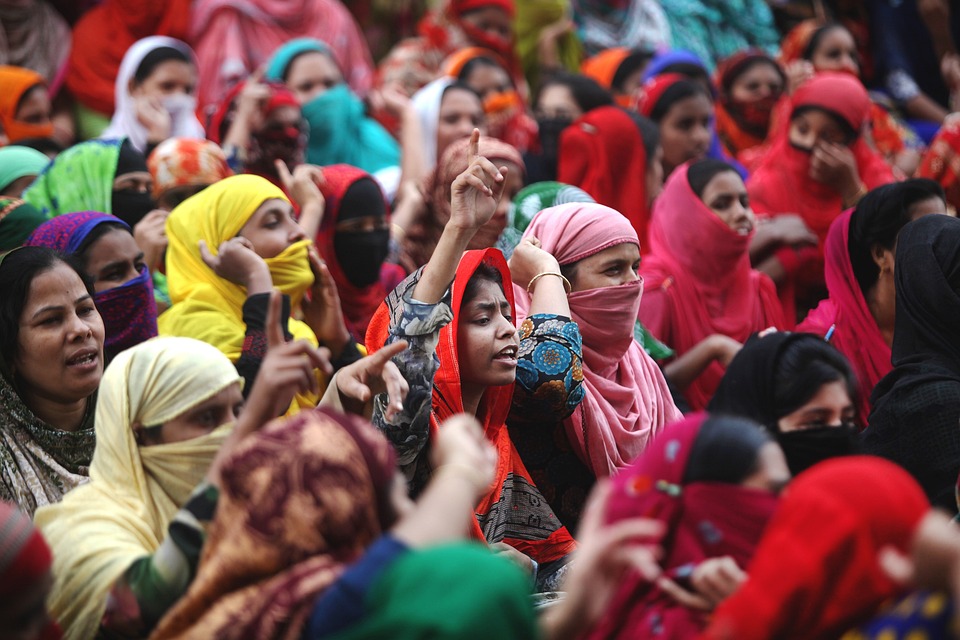Bangladesh, Myanmar need to pursue a ‘fruitful Rohingya solution strategy’-
Dr. Shakuntala Bhabani
A 22-member team of Myanmar immigration officials visited Rohingya refugee camps in Cox’s Bazar to verify more than 400 Rohingya refugees as part of a pilot repatriation project. Does it hold out any hope for the forcibly displaced people to return to their ancestral homes in the Rakhine state of Myanmar? Only time will tell. However, the Beijing-mediated project could not start its work for the last three years for different reasons which include the covid pandemic of 2020 and military coup of 2o21.
Now Myanmar’s military junta’s fresh move to take back the Rohingya who fled their homes in the Rakhine state in the face of a pogrom six years ago, should be taken with a pinch of salt. For this process actually started, thanks to the Chinese initiative in November 2017, three months after the exodus of the Rohingya population on a massive scale from Myanmar. Bangladesh sent a list of nearly 900,000 Rohingya living in the refugee camps in Cox’s Bazar to the Myanmar government for repatriation. But the Naypyidaw authority then sent back a shortened list that contained less than 8.0 percent of Rohingya names Bangladesh earlier handed over to it. Out of that list, the names of 1,100 plus Rohingya-a drop in the ocean when compared with the actual number of refugees to be repatriated- were selected for family-wise repatriation to Myanmar. But the Myanmar junta objected to a few hundred names (429, to be precise). Then Bangladesh pointed to some mismatch in the list of Rohingya names objected to by the Naypyidaw government. It is in fact, a belated response to that last exchange between the two countries over the Rohingya repatriation issue. The present Myanmar team is in Cox’s Bazar now for further verification of the refugees whose names were in the rejected list. Consider that this shuttling back and forth between Dhaka and Naypyidaw has been going on for years over the selection of a few hundred names of Rohingyas out of close to a million of them waiting for repatriation! So, questions arise about the very feasibility of this approach to repatriate such a huge number of Rohingya refugees. Even so, seeing that the incumbent Myanmar government has at least begun to make a move on Rohingya repatriation is, of course, better than no move at all. That is more so against the backdrop of the international community’s growing indifference towards the Rohingya issue.
Interestingly, as it could be learnt from media reports, before the current initiative was taken by the Myanmar junta over Rohingya repatriation, diplomats of eight countries including China, India and Bangladesh posted in Naypyidaw had been taken to the Rakhine state of Myanmar, to show them the preparations the Myanmar authorities have taken to resettle the displaced Rohingya refugees. It is a development unthinkable before. Some 11 ambassadors to Myanmar from different countries were thus allowed to see the interim camps set up for the purpose in Sittwe, the capital of Rakhine state, and in Maungdaw, a town in that state. Internally Displaced People (IDP) such as the Rohingya still staying in Myanmar might thus have a chance to move to Sittwe. It could also be learnt that some healthcare services are also being extended to Rohingya people still staying in the Rakhine state.
It appears the Myanmar junta has finally been able to see reason perhaps under Chinese pressure. Meanwhile, the post-coup (of February 2021) Myanmar junta has been engaged in a war on many fronts including the different ethnic groups and that of the bloody, internecine one with the rebellious common people of Myanmar who are fighting for restoration of a democratic government following the overthrow of the elected government of Aung San Suu Kyi. So, the Myanmar junta might be in need of some breathing space. Also, it might be that its close ally China wants repatriation of the Rohingya in their homeland so that its economic interest worth billions of dollars in the Rakhine state is not jeopardized by incessant war in the area. Moreover, Rakhine state is a corridor to the Indian Ocean that China wants to protect by all means. Reports further have it that China is willing to train the local population of Rakhines including the Rohingya for their future employment in the Chinese infrastructure and other ongoing projects in that region. For this purpose, China has been pressuring the Myanmar government to stop war and restore stability in the strategically located Rakhine state. There is also the urgency on the part of the incumbent Naypyidaw government to show the international community that it is after all doing something positive on the Rohingya issue. It may be recalled on this score that Myanmar is facing prosecution in the International Court of Justice (ICJ) for having committed genocide against Rohingya people. Myanmar is to meet the deadline of producing its counterargument against genocide charge before ICJ by April 24 next.
These are only possible reasons behind Myanmar junta’s sudden change of heart regarding the all but dead issue of Rohingya repatriation. Even so, it will be important to know what the Rohingya themselves are thinking about the present move to repatriate them. For there are the questions of their rights including their citizenship, safety, right to work and so on once they return to Myanmar. But these issues were not reportedly part of the visited Myanmar team’s responsibilities.













